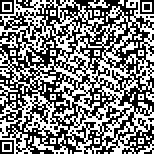| 本文已被:浏览 643次 下载 452次 |

码上扫一扫! |
|
|
| 麻杏石甘汤“异病同治”肺炎支原体肺炎与支气管哮喘的网络药理学机制研究 |
|
邬霄霞1,2, 李焕敏1,2, 孙丹1,2, 韩耀巍1,2, 李新民1,2
|
|
1.天津中医药大学第一附属医院, 天津 300193;2.国家中医针灸临床医学研究中心, 天津 300193
|
|
| 摘要: |
| [目的] 研究利用网络药理学及分子对接技术探究麻杏石甘汤“异病同治”肺炎支气体肺炎(MPP)与支气管哮喘(BA)的共同潜在靶点及作用机制。[方法] 通过检索中药系统药理学数据库和分析平台(TCMSP)与中国知识资源总库(CNKI)筛选麻杏石甘汤的活性成分及其作用靶点,运用UniProt数据库将其进行标准化。运用GeneCards、OMIM数据库收集MPP与BA疾病相关靶点。利用Venny2.1获取药物-疾病共有靶点。利用Cytoscape3.9.1软件构建疾病-药物-成分-靶点网络;将交集靶点输入STRING数据库进行蛋白相互作用蛋白相互作用(PPI)网络构建。利用DAVID数据库对共同靶点进行GO富集分析和KEGG通路富集分析。最后利用AutoDockTools软件将核心成分与关键靶点进行分子对接。[结果] 筛选得到麻杏石甘汤有效成分123种,相关靶点208个。MPP疾病靶点374个,BA疾病靶点2 623个,药物-疾病交集靶点46个。GO富集分析获得生物过程276个(P<0.05),细胞组成15个(P<0.05),分子功能33个(P<0.05)。KEGG通路富集分析获得麻杏石甘汤治疗MPP与BA的共同通路主要有糖尿病并发症晚期糖基化终产物及其受体(AGE-RAGE)信号通路、白细胞介素-17(IL-17)信号通路、肿瘤坏死因子(TNF)信号通路、低氧诱导因子-1(HIF-1)信号通路等;分子对接表明核心成分与关键靶点多能形成稳定结构。[结论] 麻杏石甘汤通过多成分、多靶点、多途径的特点治疗MPP与BA,为中医“异病同治|理论提供新的思路,同时也为麻杏石甘汤的临床应用及机制研究提供了生物信息学依据。 |
| 关键词: 肺炎支原体肺炎 支气管哮喘 麻杏石甘汤 异病同治 网络药理学 |
| DOI:10.11656/j.issn.1672-1519.2023.07.17 |
| 分类号:R375.2 |
| 基金项目:国家自然科学基金面上项目(82074491);国家自然科学基金青年项目(82104931);天津市科技计划项目(21JCZDJC01130)。 |
|
| Research on the mechanism of network pharmacology of Maxing Shigan Decoction for “treating different diseases with the same treatment” in mycoplasma pneumoniae pneumonia and bronchial asthma |
|
WU Xiaoxia1,2, LI Huanmin1,2, SUN Dan1,2, HAN Yaowei1,2, LI Xinmin1,2
|
|
1.First Teaching Hospital of Tianjin University of Traditional Chinese Medicine, Tianjin 300193, China;2.National Clinical Research Center for Chinese Medicine Acupuncture and Moxibustion, Tianjin 300193, China
|
| Abstract: |
| [Objective] In this study,network pharmacology and molecular docking techniques will be used to explore the common potential target and mechanism of Maxing Shigan Decoction for “treating different diseases with the same treatment” in mycoplasma pneumoniae pneumonia (MPP) and bronchial asthma (BA). [Methods] The active ingredients and their targets of Maxing Shigan Decoction were screened by searching the traditional Chinese medicine systems pharmacology database and analysis platform(TCMSP) and the Chinese knowledge resource database(CNKI),and standardized by UniProt database. Related disease targets of MPP and BA were obtained respectively by using databases of GeneCards,OMIM. Venny 2.1 was used to obtain drug-disease common target. A disease-drug-component-target network was constructed by using Cytoscape 3.9.1 .The intersection targets were input into STRING database for protein-protein interaction PPI network construction. GO enrichment analysis and KEGG pathway enrichment analysis of common targets were performed using the DAVID database. Finally,AutoDockTools software was used to connect the core components with key targets. [Results] Totally 123 active components of Maxing Shigan Decoction and 208 related targets were screened. There were 374 MPP disease targets,2 623 BA disease targets,and 46 drug-disease intersection targets were obtained. GO functional enrichment analysis obtained 276 biological processes (P<0.05),15 cellular compositions (P<0.05),and 33 molecular functions (P<0.05). KEGG pathway enrichment analysis showed that the common pathways of Maxing Shigan Decoction in the treatment of MPP and BA were mainly AGE-RAGE signaling pathway,IL-17 signaling pathway,TNF signaling pathway,and HIF-1 signaling pathway for diabetic complications. Molecular docking showed that the core components could mostly form stable structures with the key target. [Conclusion] Maxing Shigan Decoction treats MPP and BA through the characteristics of multiple components,multiple targets and multiple ways,providing new ideas for the theory of “treating different diseases with the same treatment” in TCM,and also providing a bioinformatics basis for the clinical application and mechanism study of Maxing Shigan Decoction. |
| Key words: mycoplasma pneumoniae pneumonia bronchial asthma Maxing Shigan Decoction different diseases with the same treatment network pharmacology |
